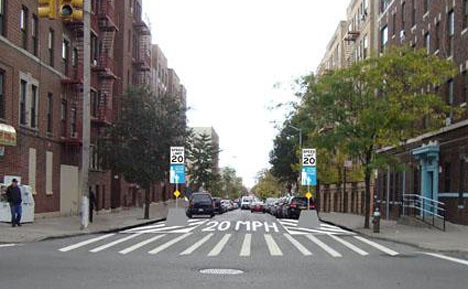Being Street Smart

Whether you are set to travel into a bad neighborhood or if you are preparing for a societal collapse in which most neighborhoods will turn bad, knowing how to be street smart may save you trouble or your life. You cannot just learn it by reading about it and then saying to yourself that you will do those things if and when you have to… instead you must practice it in your daily life and apply it in appropriate degrees of purpose for your given location. It should be part of your situational awareness and response thereof.
Know Where You Are
It is quite easy to pick out someone who is a tourist, lost or confused. These people will be targets. Know the streets that you are on, or will be on; the way in and the way out. Look at a map ahead of time so that if you get lost, you will know the direction to get out.
Don’t start a trip without a full tank of gas, particularly if you are planning to go into an unfamiliar area. Never let your gas tank go below half full, for more reasons than just one.
Learn everything you can about the public transportation system in the area, if there is one, because you might need to use it. Understand the routes and fares. Know the hours that station attendants are working, as these are the safest places to wait for your ride. A train, subway, ferry or bus station can be a dangerous place late at night, and not knowing what you’re doing will make the situation more dangerous.
Blend In
Dress to blend in and avoid clothing and colors that may cause you to stand out from the crowd. Plain and neutral colors are often best, worn in an understated fashion. Don’t draw attention to yourself by wearing jewelry, looking ‘too good’, or being individualistic in any way.
Act Like You Don’t Care
While you need to be at peak situational awareness, you need to look like you don’t care… flowing with the crowd. Do not stare. Do not look all around as though gazing at new surroundings. Do not run. Do not engage in loud conversation or laughing or fooling around. Just be quiet and go where you are going in a purposed direction.
Avoid Contact With Strangers
Again, use situational awareness. Look well ahead as you move. If you see that you will be meeting with potentially questionable individuals or a group, then cross the street or change direction if it will not look obvious that you are intentionally avoiding them. If you must cross paths, then stay at your pace. Don’t speed up. If you were talking with a companion, don’t stop talking or suddenly talk real quiet.
Eye Contact
The best way to deal with this in a bad neighborhood is to treat the situation exactly the same as you would in what you consider a safe neighborhood. Don’t stare. Don’t look away too fast. If you make eye contact, then a quick pleasant smile should suffice. Even if you are nervous, you must come across as comfortable.
Responding To A Talking Stranger
You’re walking down the sidewalk and pass a stranger who says “How’s it going?”. Simply respond with “It’s going well, thanks”, and keep on walking at your existing pace. Do not say “It’s going well, how about you?”. Don’t invite conversation in a neighborhood where you feel unsafe. While it is true that some people are being genuinely friendly when asking, unfortunately there are those with darker intentions. Sometimes it is more obvious than others.
Street Smart success begins with situational awareness and going about your business in a purposeful manner that does not attract undue attention. Problems arise when people who have not practiced Street Smarts suddenly find themselves in an environment where they need to be careful… they are usually very easy to identify in a crowd. The next time you are out and about, imagine to yourself what you look like to others as you go about your business. Picture yourself from across the street or someone who is sitting or standing still watching you. What do you look like? Do you fit in with the environment you’re in?
